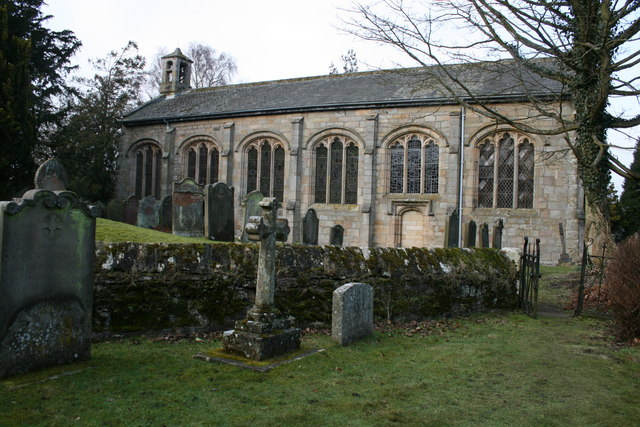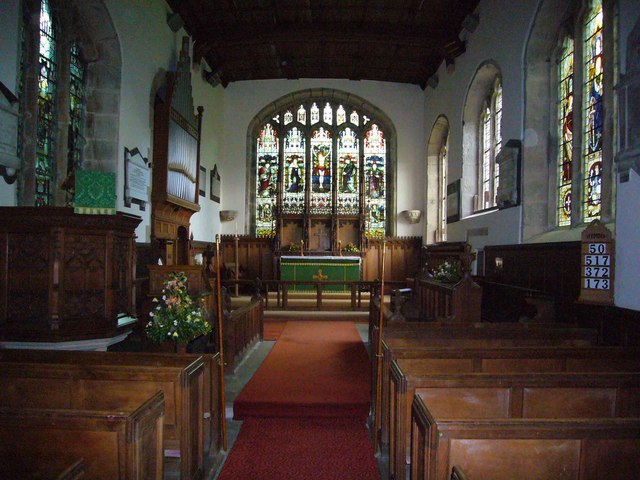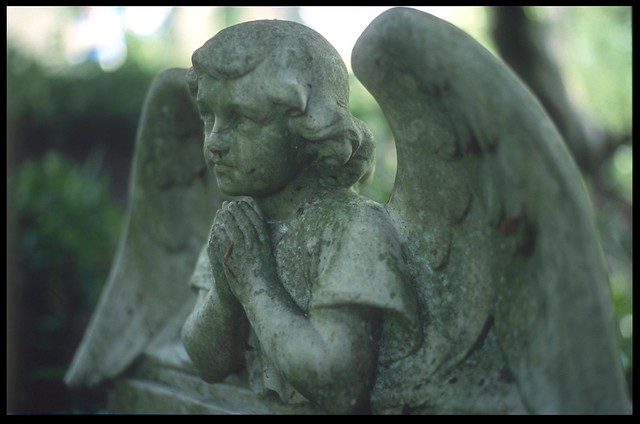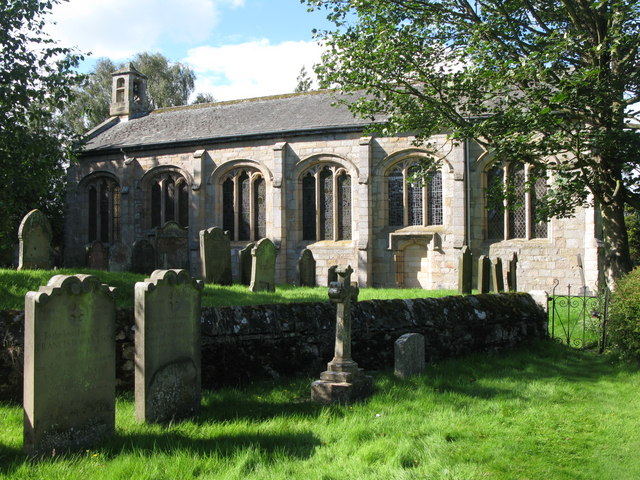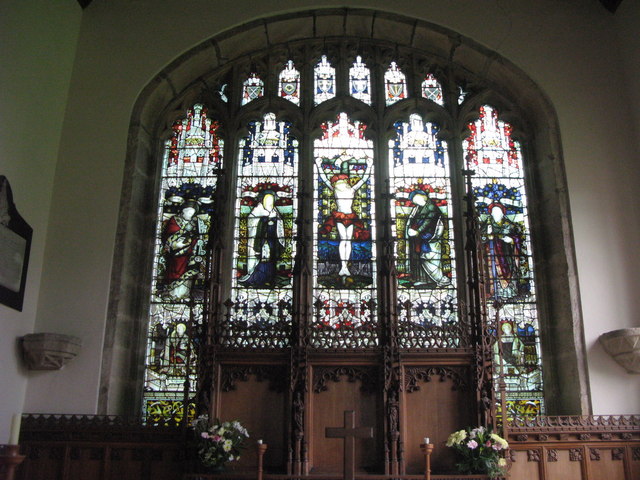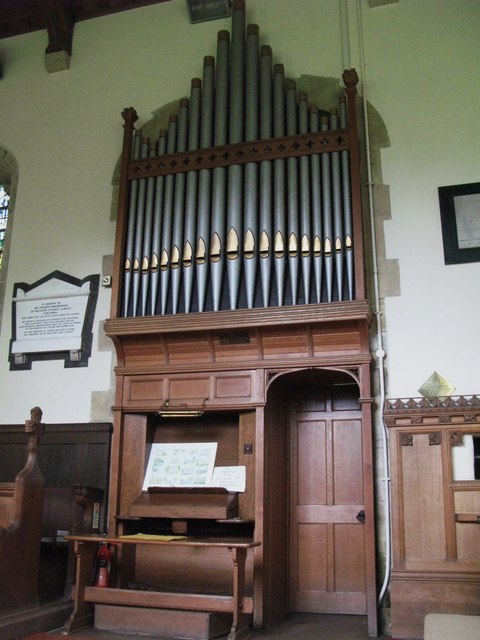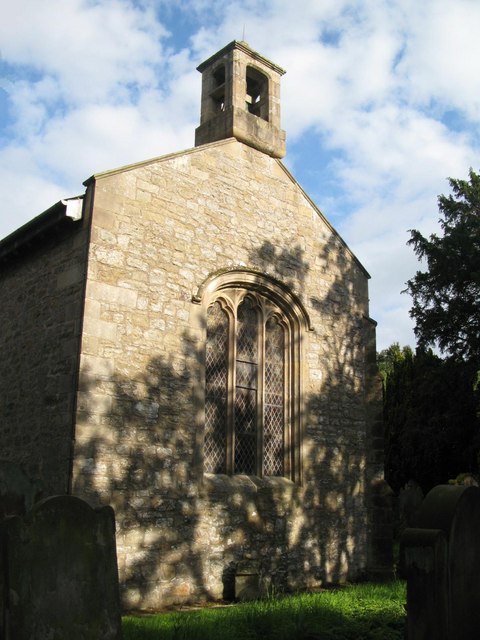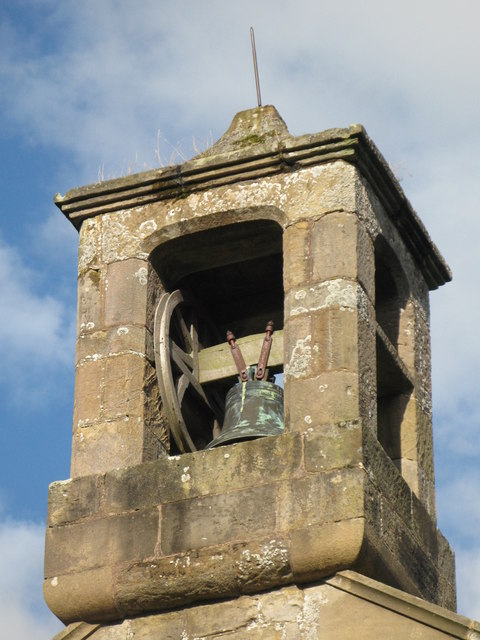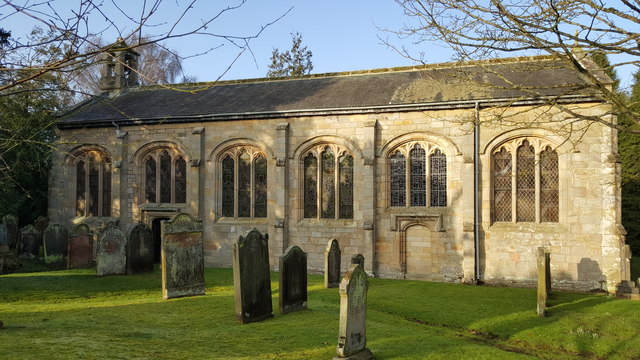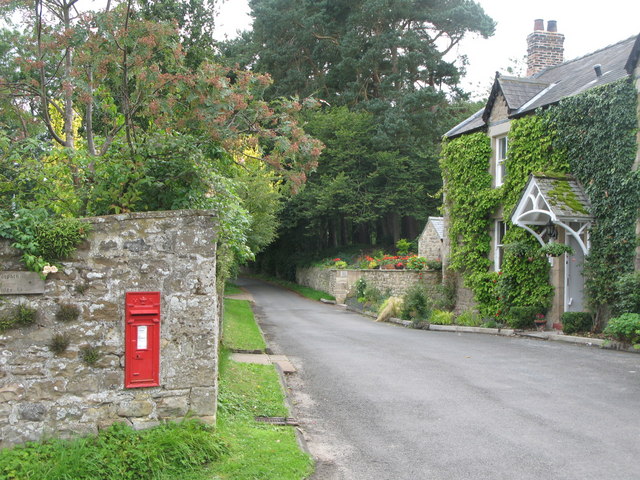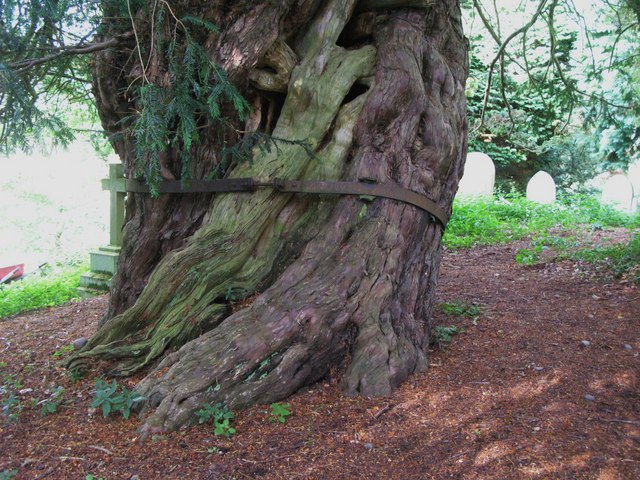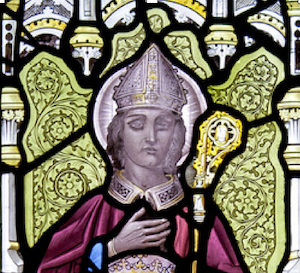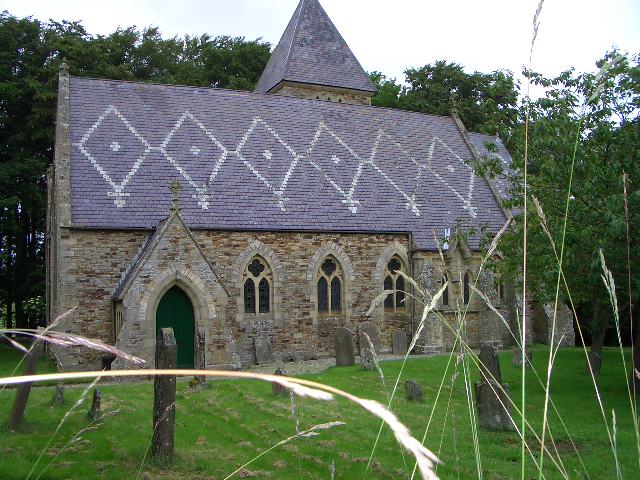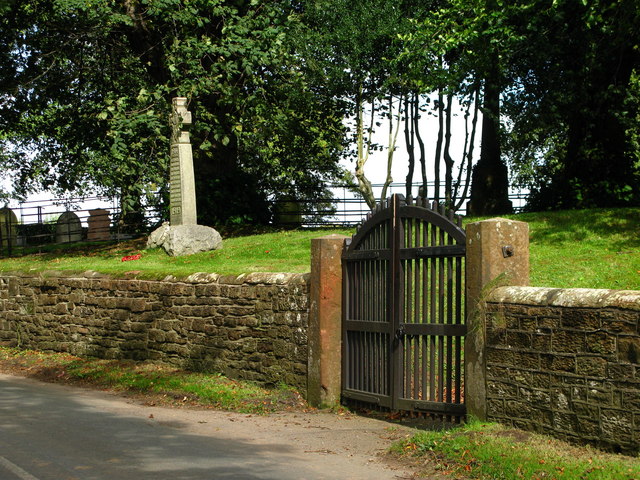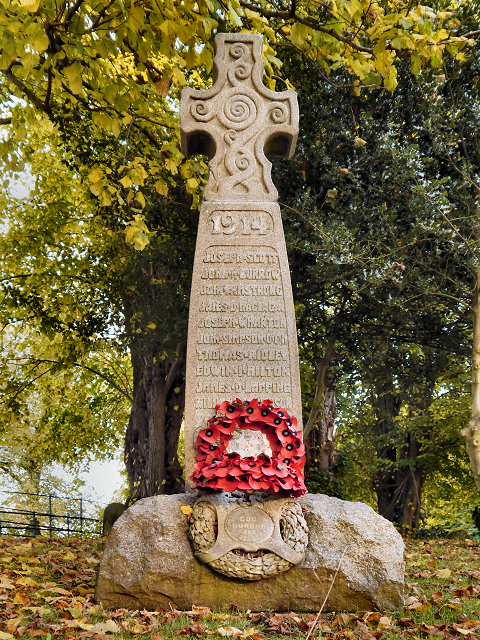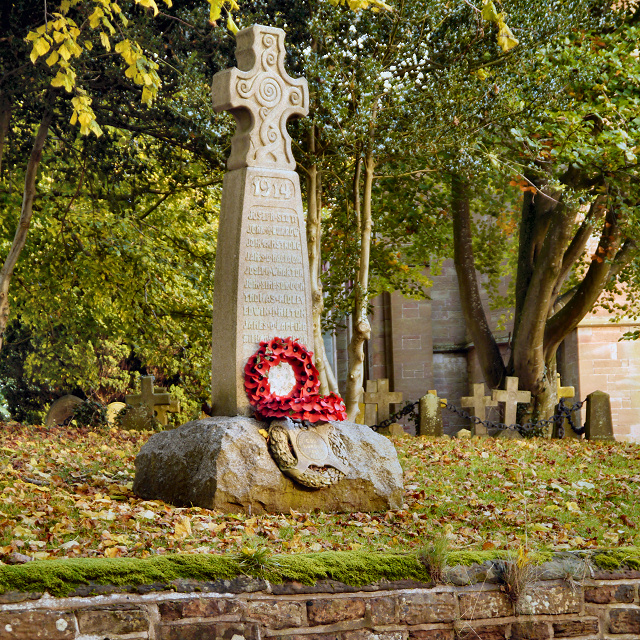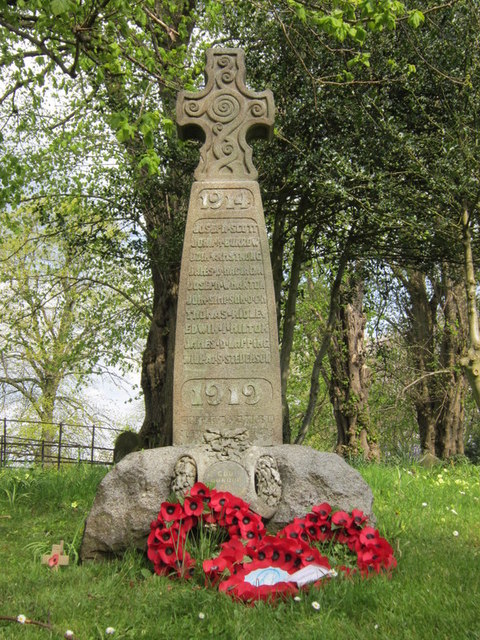Topics > Northumberland > Beltingham > Church of St. Cuthbert, Beltingham
Church of St. Cuthbert, Beltingham
The church is dedicated to St. Cuthbert and stands in a churchyard containing three massive yew trees, which are more than 700 years old,(see below) and may well have been used for the making of longbows before guns came. Bishop Nicholas Ridley was keen on archery, which was compulsory school sport in the days of Henry VIII. The yew tree indicates an old church, but the present church was built about 1500 in Perpendicular style. There is no division between nave and chancel, and the roof carries a little bell tower. There is an old cross shaft at the west end. In 1883-4 the church was very much restored, and some of the old memorials were destroyed. One, recorded by John Hodgson, requested prayers for the soul of Nicholas Ridley, who died in the fifteenth century (1490). There is a memorial now in the church to the Revd. Anthony Hedley of Chesterholm, friend of Hodgson, who died 17 January 1835, having caught a fatal chill in going out to supervise an excavation at Vindolanda fort. He was born near Otterburn and related to Capability Brown. Both had served the Marquis of Bath at Longleat. Hedley was inspired to improve vicarage gardens as well as to search for antiquities.
Standing halfway between Ridley bridge and Willimoteswick, the little church stands above a burn, making it look like an island, and clustered round the green and the lych-gate are the few houses and the village school. This church, another dedicated to St. Cuthbert, was founded in Saxon days but little of the Saxon building remains. The church we know today was restored at the end of Queen Victoria's reign by Francis Bowes-Lyon, who was an uncle of Queen Elizabeth the Queen Mother. The yew tree in the churchyard would be young when Nicholas Ridley died and the forefathers of men who sleep beneath its shade may well have cut their bows from it to draw at Flodden. The almost perfect leper's squint is still there, to remind us that in the Dark Ages the outcasts were banned from the house of God.
"Churchyards can be little havens for wildlife, as they are often quiet and undisturbed." Ancient yews offered a sanctuary for the region's wildlife, one of which St Cuthbert's churchyard is believed to be up to 2,000 years old.
Visit the page: Beltingham for references and further details. You can contribute to this article on Wikipedia.
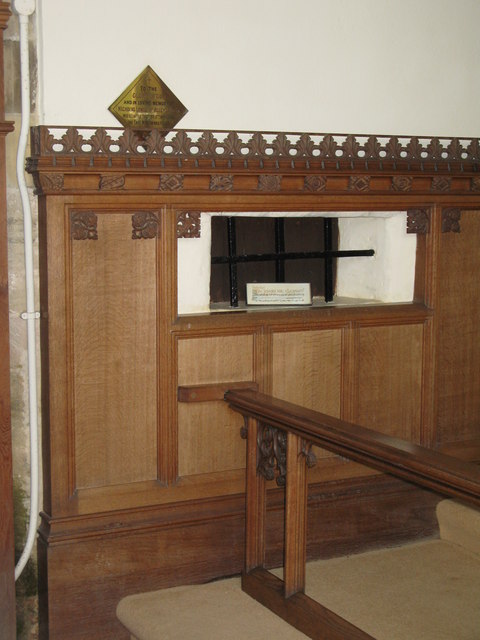
from Geograph (geograph)
St. Cuthbert's Church, Beltingham - grated squint
Pinned by Simon Cotterill
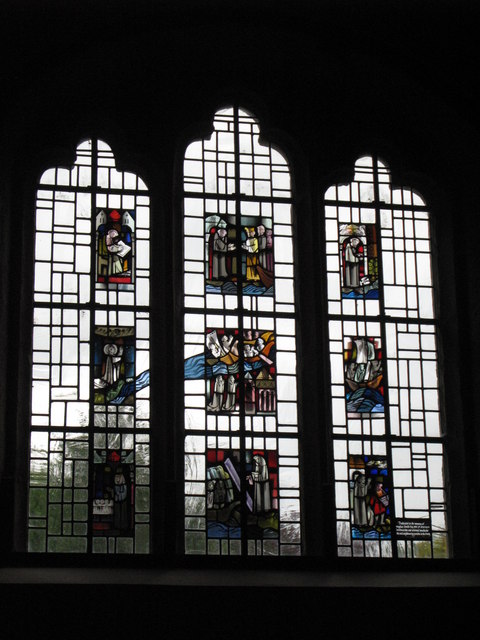
from Geograph (geograph)
St. Cuthbert's Church, Beltingham - stained glass window
Pinned by Simon Cotterill

from Geograph (geograph)
St. Cuthbert's Church, Beltingham - carved head on choir stall
Pinned by Simon Cotterill

from Geograph (geograph)
St. Cuthbert's Church, Beltingham - carved head on choir stall (2)
Pinned by Simon Cotterill

from Geograph (geograph)
St. Cuthbert's Church, Beltingham - carved head on choir stall (3)
Pinned by Simon Cotterill

from Geograph (geograph)
St. Cuthbert's Church, Beltingham - carved head on choir stall (4)
Pinned by Simon Cotterill

from Geograph (geograph)
St. Cuthbert's Church, Beltingham - carved head on choir stall (6)
Pinned by Simon Cotterill

from Geograph (geograph)
St. Cuthbert's Church, Beltingham - carved head on choir stall (7)
Pinned by Simon Cotterill

from Geograph (geograph)
St. Cuthbert's Church, Beltingham - carved head on choir stall (8)
Pinned by Simon Cotterill

from https://historicengland.org.u…
CHURCH OF ST CUTHBERT - Beltingham - List Entry
- Parish church, late C15, extended C17, restored 1884. Squared stone and rubble, slate roof. Single cell, externally of 6 bays; western 3 bays thought to be C17 addition. 1884 north …
Added by
Simon Cotterill

Co-Curate Page
Beltingham, 1848
- BELTINGHAM, a hamlet, in the township of Ridley, parish and union of Haltwhistle, W. division of Tindale ward, S. division of Northumberland, 5½ miles (E. by S.) from Haltwhistle. This …


from Geograph (geograph)
St. Cuthbert's Church, Beltingham - grated squint
Pinned by Simon Cotterill

from Geograph (geograph)
St. Cuthbert's Church, Beltingham - stained glass window
Pinned by Simon Cotterill

from Geograph (geograph)
St. Cuthbert's Church, Beltingham - carved head on choir stall
Pinned by Simon Cotterill

from Geograph (geograph)
St. Cuthbert's Church, Beltingham - carved head on choir stall (2)
Pinned by Simon Cotterill

from Geograph (geograph)
St. Cuthbert's Church, Beltingham - carved head on choir stall (3)
Pinned by Simon Cotterill

from Geograph (geograph)
St. Cuthbert's Church, Beltingham - carved head on choir stall (4)
Pinned by Simon Cotterill

from Geograph (geograph)
St. Cuthbert's Church, Beltingham - carved head on choir stall (6)
Pinned by Simon Cotterill

from Geograph (geograph)
St. Cuthbert's Church, Beltingham - carved head on choir stall (7)
Pinned by Simon Cotterill

from Geograph (geograph)
St. Cuthbert's Church, Beltingham - carved head on choir stall (8)
Pinned by Simon Cotterill

from https://historicengland.org.u…
CHURCH OF ST CUTHBERT - Beltingham - List Entry
- Parish church, late C15, extended C17, restored 1884. Squared stone and rubble, slate roof. Single cell, externally of 6 bays; western 3 bays thought to be C17 addition. 1884 north …
Added by
Simon Cotterill

